When I first moved to Henderson, NV I decided to play through Fallout: New Vegas to get a feel for my new town since map in the game is reasonably accurate (I live somewhere between Black Mountain and Hidden Valley.) But what's important is this:

This is the most ridiculously useful thing. It gives you so much information about where you are, just by the way it scrolls around makes it feel like there's a solid, fixed universe that you're moving within.
So I needed a compass for my car, I guess not *needed* but the 8 cardinal (so I guess cardinal-and-a-half?) directions my car's built-in compass gives me weren't enough to really give that feeling of moving in relation to some static firmament like you get in Fallout.
So unlike most of my projects where some cool display is the starting point, this one actually started with the "need."
Jeeps have this nice tray on the top of the dashboard that I can't put anything in that isn't black because it will reflect onto the windshield and drive me crazy.

So I figured that would make an excellent spot for a compass. An early idea was to use this Realorama slide viewer as the enclosure, and have some kind of display facing towards the curved mirror on the back. It would have looked awesome but getting it to fit and be visible would probably never be as clean as I wanted.

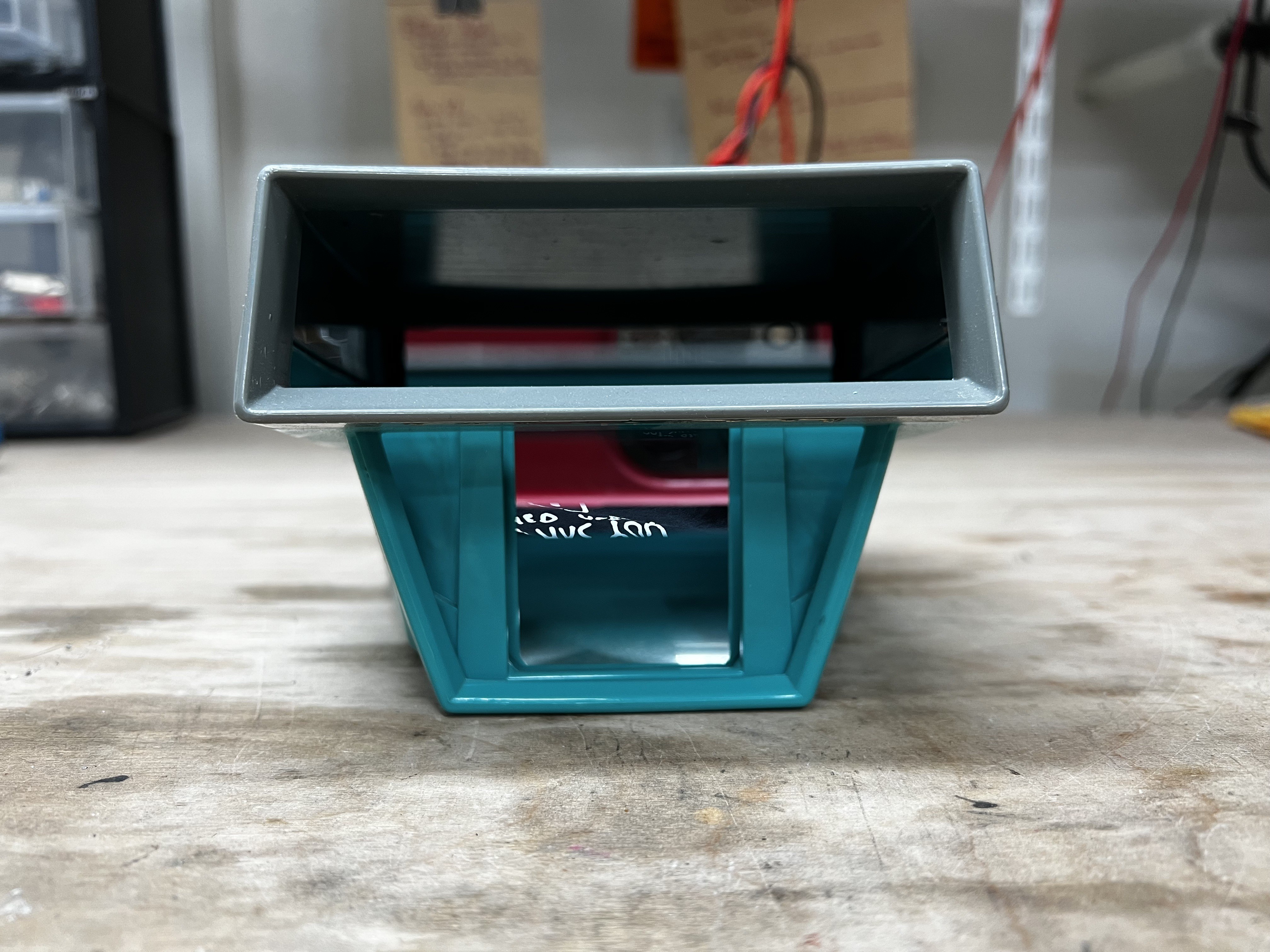
Another early idea was printing the compass on a loop of 35mm film, backlighting it with a display that can show markers and stuff, and having motors move the film around on the sprockets as the heading changes. And for extra credit; a big linear reading ammeter on top of everything to mark locations. But that's a lot of mechanics and getting it to be anything but fiddly would be a huge undertaking. I may still do that for something else.
So eventually, while casually browsing through eBay for whatever sexy old electronic doodads I may find, the universe gave me what I needed to make this compass happen.

An IGV1-16 plasma scan display. Baller.
Now the question was how to drive it. The datasheets for these things give a little bit of information, but not really enough to get an idea of what signals it needs and why. I know they sell these with the driver boards but my experience with those things is that they're almost always way more trouble than they're worth, especially if you want anything other than text from a font preloaded into a ROM chip.
Luckily, these are an exact knockoff of a Burroughs Self-Scan, which has tons of information floating around. I wasn't sure about how exact at first but I just decided to pretend it was and just run with it.
I wrote whole thing here on the theory of operation but it got so long that now it's its own separate log
Now that you're back from reading that whole thing, you can see that really all I needed was a board that takes the 11 signals from the microcontroller, and buffers them up to the high voltages that the IGV1-16 works with.
Here's the schematic of each of the data drivers (just imagine this 6 times)

There's a pullup resistor to +250V built into the display.
And here's what the Scan Cathodes look like
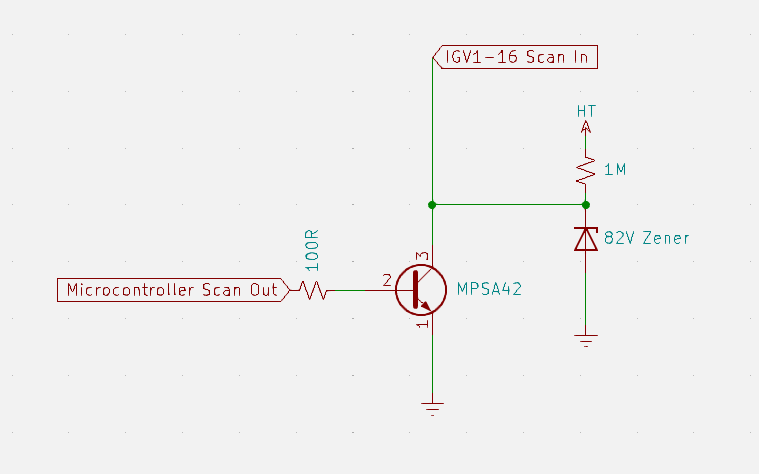 The Reset (or blank) line can optionally be slightly different (it's not in this project though)
The Reset (or blank) line can optionally be slightly different (it's not in this project though)
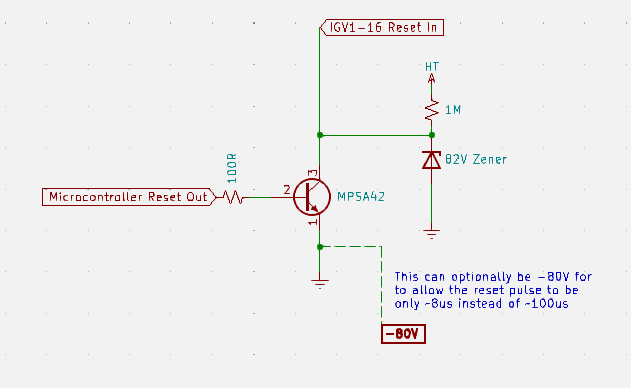
It's just pulls down to -80V instead of GND (if you want to reset quicker, like the rest of them (there might be another resistor between the zener and transistor)
So I built it all on a breadboard
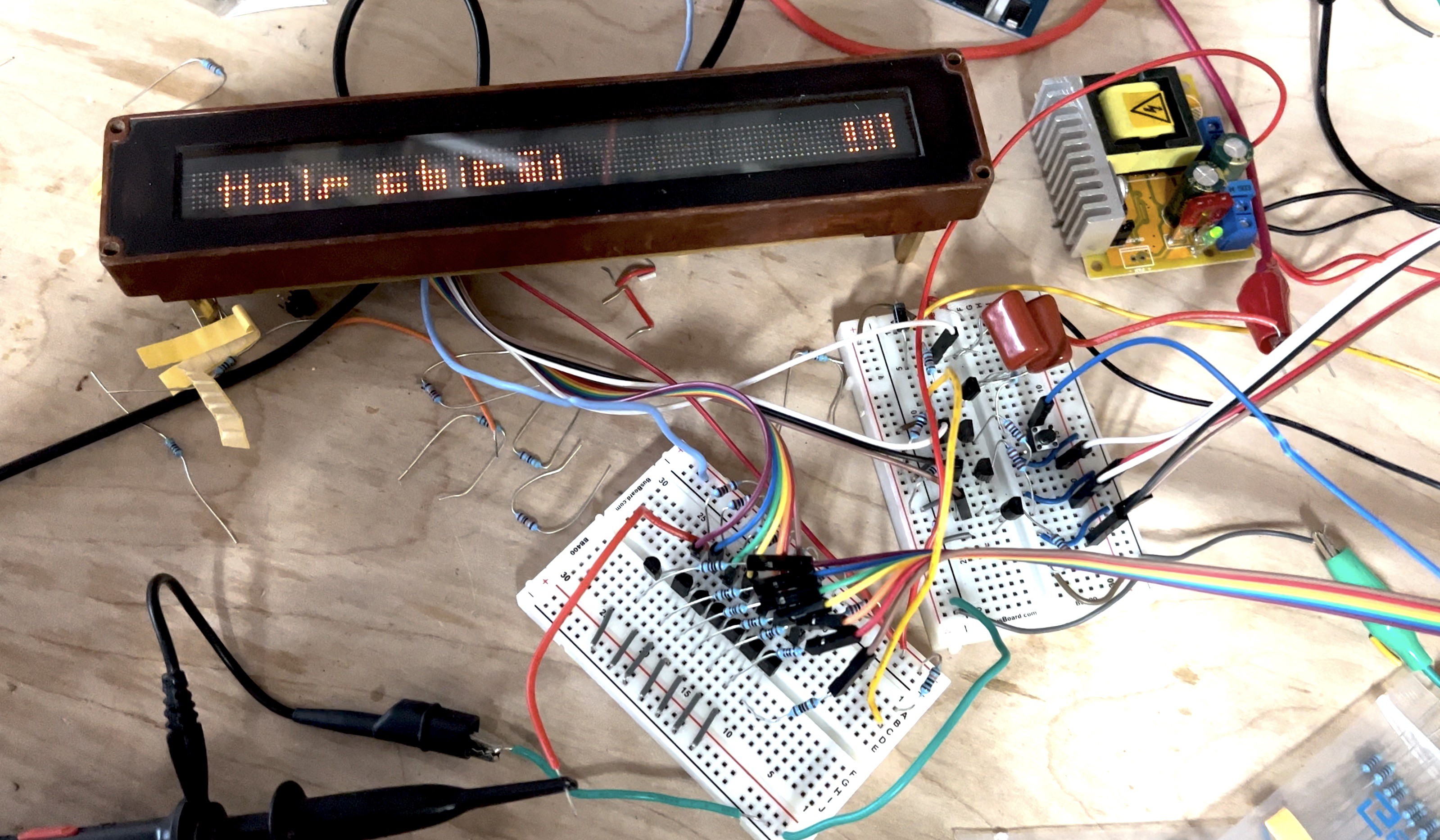
not pictured - the smell of burning transistors
The first transistors I used weren't quite up to the task. I don't remember what they were, but don't use them.
The boards here are (from center to top right), display lines, scan and reset lines, HV module, and an unseen Arduino-like board off to the left.

This one had the High Voltage too low, so the plasma dots weren't always scooting along like they should.
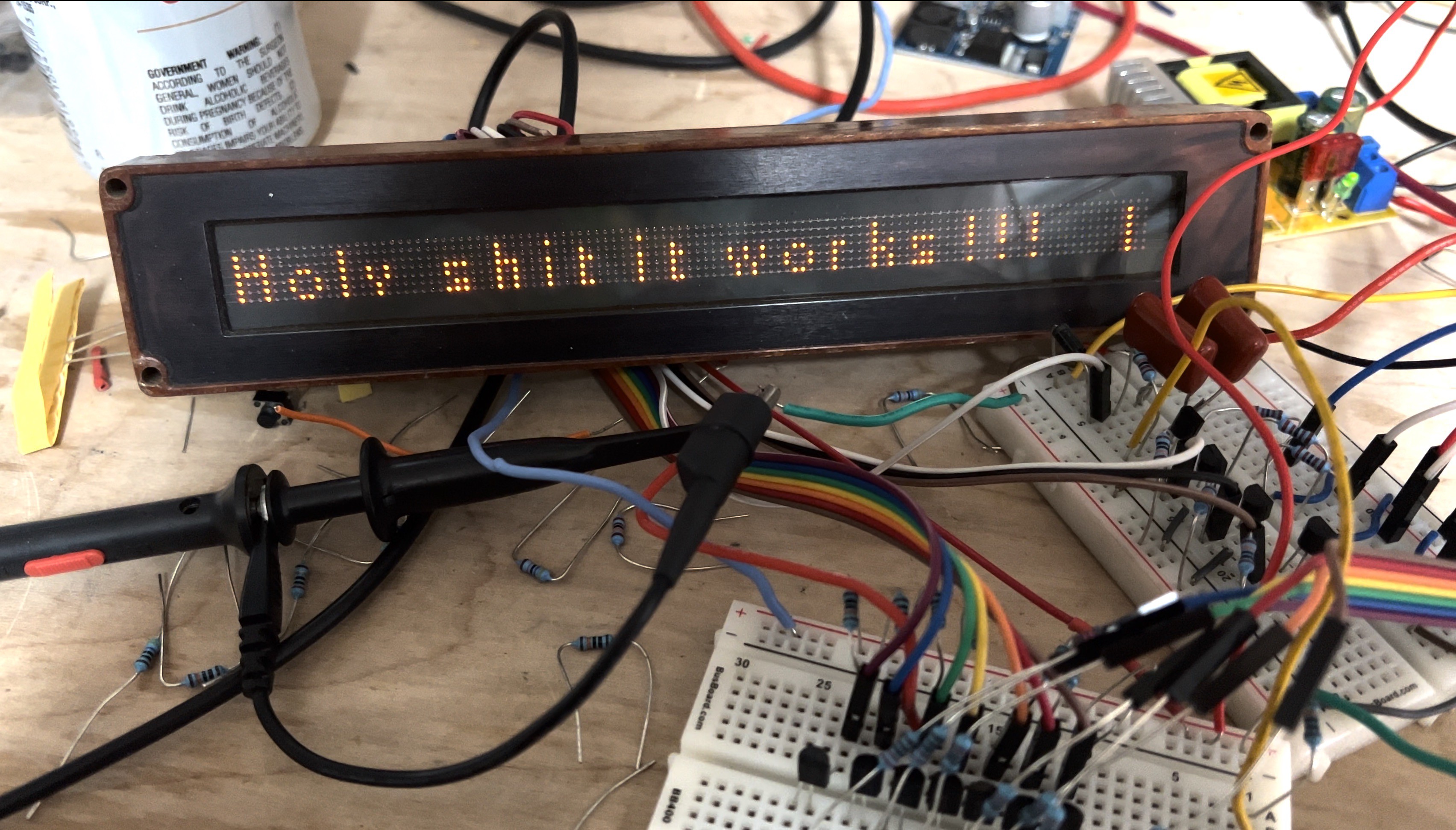
My thoughts exactly, IGV1-16.
When I was satisfied with the circuit, I moved it all over to a protoboard, hooked up an MPU 9250 9 DOF IMU, downloaded some Arduino library to get a heading and took it for a test drive.
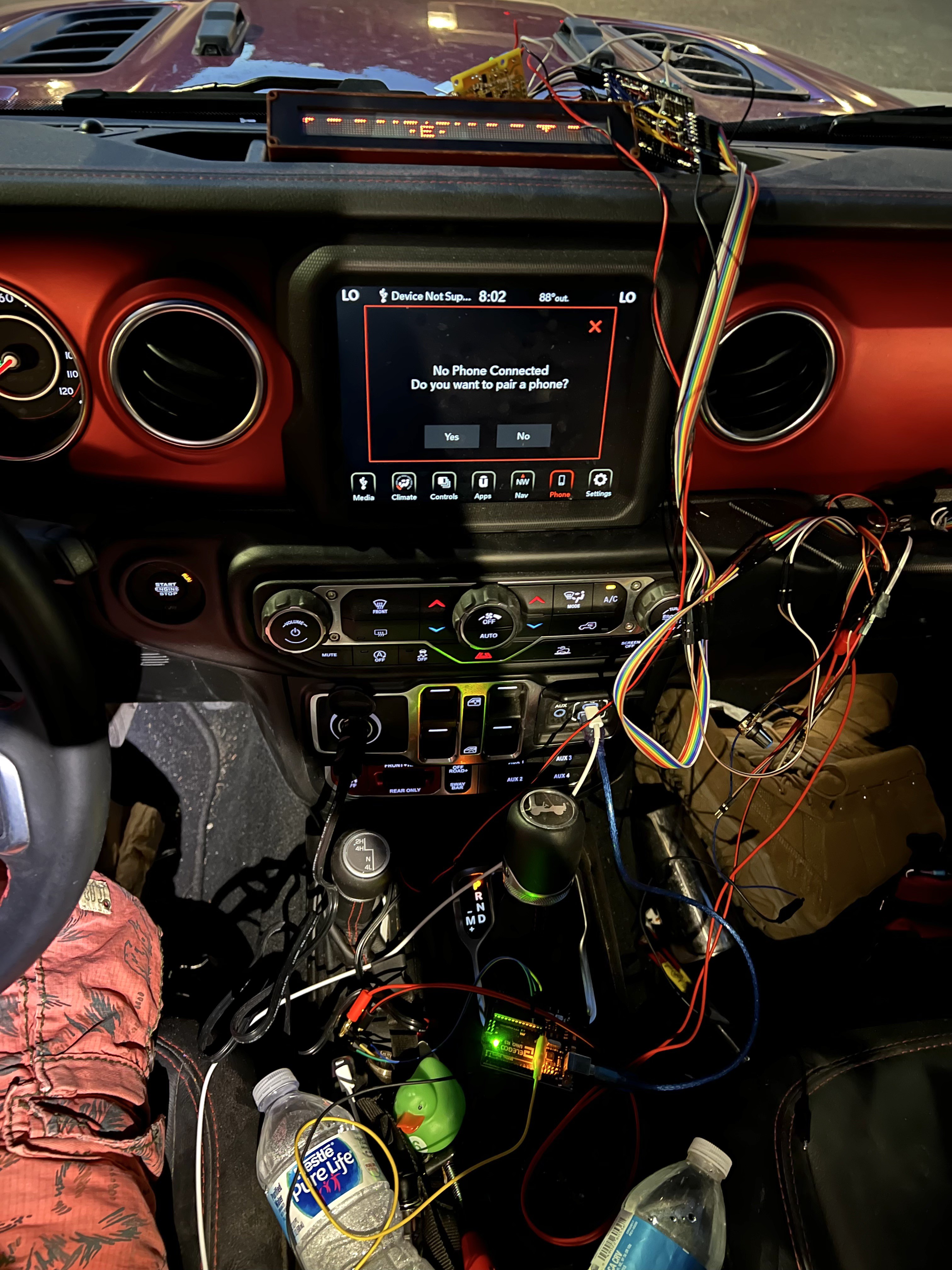
I gathered some very valuable data here:
1. This looks cool as fuck.
2. Getting a compass to work in a car might be harder than I was assuming.
Both of these things became more and more true over time
 Kevin Santo Cappuccio
Kevin Santo Cappuccio
Discussions
Become a Hackaday.io Member
Create an account to leave a comment. Already have an account? Log In.
NICE ! really nice madmaxish I really like your concept of instrument drawing. I hope you will not be angly. But I use it as a test peas. If I can click it out in my project: https://www.youtube.com/watch?v=_253kcNazdg
About yss-multi-svg: https://github.com/yOyOeK1/oiyshTerminal/wiki/otdm-yss-multisvg
About this instrument.svg: https://github.com/yOyOeK1/oiyshTerminal/blob/main/ySS_calibration/sites/multiSVG/igv1-16.svg
Are you sure? yes | no
Hey, your project is really cool. I just might try putting that system into my old, hacked-together sailboat. I hope I never get into a situation where I have to worry about Hit Points though.
But just so you know, I can't take credit for that image. It's from the video game Fallout: New Vegas. I imagine using it falls under "fair use" so I doubt that Bethesda Game Studios would be mad either.
Are you sure? yes | no